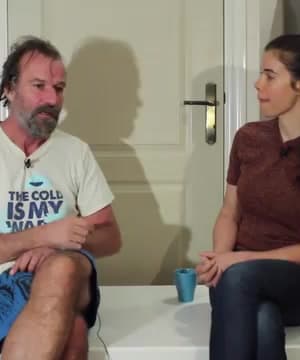Breathing Techniques
Sources:
Rhonda Patrick discusses the importance and benefits of various breathing techniques, which impact the body in multiple ways:
-
Decreasing Carbon Dioxide Levels and Pain Management:
- Breathing techniques can lower carbon dioxide in the blood, increasing the blood's pH level. This can deactivate pain receptors by raising the pH and disconnecting it from the thermoreceptor. The reduced carbon dioxide encourages a condition known as respiratory alkalosis, which is usually hard to achieve without such breathing techniques. Overall, this aids in pain management and can enhance the body's tolerance to cold 1.
-
Oxygenation and Anti-inflammatory Effects:
- Wim Hof’s breathing technique improves oxygen flow to the neocortex by altering traditional breathing patterns, enhancing focus, and boosting physiological processes like carbon dioxide removal and pH level adjustment. The increased epinephrine also triggers an anti-inflammatory response, which is particularly beneficial in reducing the symptoms associated with autoimmune diseases 2.
-
Controlled Exposure to Cold:
- Incorporating breathing techniques in response to cold exposure helps in maintaining better control over body’s response to cold, enhancing oxygen supply to cells, and facilitating a stronger control over neurotransmitters. This is a natural reaction to cold that requires profound breathing to maximize oxygen delivery to all cells, which is crucial in dealing with the cold's stress impact on the body 3.
-
Performance Enhancement in Exercise:
- Discussing sports performance, breathing through the nose during workouts can alter usual performance metrics, helping athletes find balance between intensive activity and recovery phases. Controlled breathing helps maximize performance during intense short-duration exercises by tightly controlling oxygen intake and carbon dioxide output 4.
These approaches to breathing show how influential controlled and methodical breathing can be on overall health, pain management, exercise performance, and stress responses.
RELATED QUESTIONS-



